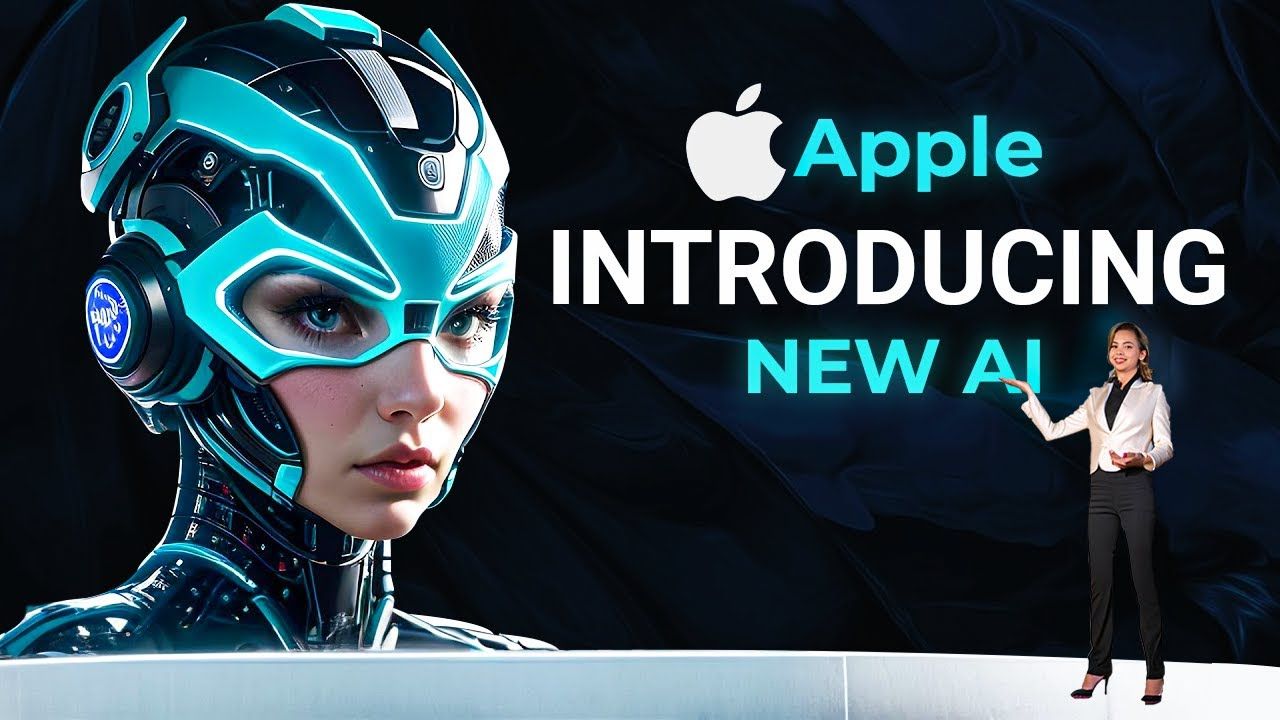Apple's AI Future: Leading The Pack Or Falling Behind?

Table of Contents
Apple's Current AI Strengths
Apple boasts several significant AI strengths, built on a foundation of privacy and on-device processing. These advantages, while significant, need to be weighed against the rapid advancements in other areas of AI.
-
Siri's evolution: Siri, Apple's virtual assistant, has undergone substantial improvements. While initially criticized for its limitations, Siri now offers more sophisticated natural language understanding, proactive suggestions, and improved task management. However, it still lags behind competitors like Google Assistant and Amazon Alexa in terms of overall functionality and contextual awareness. Siri's future hinges on bridging this gap.
-
On-device processing and privacy: Apple's commitment to on-device processing for many AI tasks is a key differentiator. This approach prioritizes user privacy by minimizing the amount of data sent to Apple's servers. This contrasts sharply with cloud-based AI models employed by competitors, which often rely on vast datasets collected from users. While privacy is a significant advantage, it can limit the capabilities of some AI features that benefit from larger datasets.
-
Core ML and its applications: Core ML (Core Machine Learning) is Apple's machine learning framework, enabling developers to integrate AI capabilities into their apps. This allows for features like advanced image recognition in the Photos app, intelligent text prediction in the keyboard, and personalized recommendations in various apps. The power of Core ML is intrinsically linked to Apple's hardware, creating a synergistic ecosystem.
-
Advancements in image recognition and computer vision: Apple has made considerable strides in image recognition and computer vision, evident in features like facial recognition for unlocking devices, object identification in Photos, and advanced image editing tools. These advancements leverage Apple's powerful hardware and the ongoing development of Core ML.
Apple's AI Weaknesses and Challenges
Despite its strengths, Apple faces several challenges in the competitive AI landscape. The company's relatively closed ecosystem and slower adoption of certain AI technologies present significant hurdles.
-
Limited open AI platform: Unlike Google and Amazon, Apple lacks a comprehensive, open AI platform for developers. This limits the potential for external innovation and the development of third-party apps that leverage Apple's AI capabilities. This closed approach, while beneficial for maintaining control and privacy, also hinders rapid progress and broad adoption of new AI technologies.
-
Competition from tech giants: Apple faces fierce competition from established tech giants like Google and OpenAI. Google's advancements in large language models and generative AI, coupled with OpenAI's groundbreaking work, pose significant challenges to Apple's position in the AI market. These companies are rapidly pushing the boundaries of AI capabilities, often leveraging massive datasets and open-source approaches.
-
Dependence on hardware: Apple’s AI strategy is heavily intertwined with its hardware. While this creates a strong synergistic effect, it can also limit the flexibility and reach of its AI solutions compared to software-focused competitors. This dependence restricts the deployment of Apple's AI to its own ecosystem.
-
Catching up in generative AI: Apple has been relatively slower than competitors in adopting and developing generative AI technologies like large language models. This lag puts Apple at a disadvantage in areas like chatbot development, content creation, and other applications that leverage generative AI.
Strategic Acquisitions and Investments in AI
To bolster its AI capabilities, Apple has engaged in strategic acquisitions and investments.
-
Key acquisitions: Apple has acquired several AI-focused companies, although many details remain undisclosed due to the secretive nature of the company. These acquisitions have undoubtedly contributed to Apple's AI expertise and talent pool, but their specific impact remains largely unknown to the public.
-
AI talent acquisition: Apple has been actively recruiting top AI talent from academia and industry, recognizing the importance of skilled researchers and engineers in driving AI innovation. This investment in human capital is crucial to Apple's future AI success.
-
AI research and development: Apple invests heavily in AI research and development, evidenced by its publications in academic journals and its participation in AI conferences. This commitment to research underscores Apple's long-term commitment to advancing its AI capabilities.
Predicting Apple's AI Future
Predicting Apple's AI future is inherently speculative, but several potential scenarios exist.
-
Siri's enhanced capabilities: We can expect further enhancements to Siri, including improved contextual awareness, more proactive assistance, and potentially more personalized features. Multimodal interactions and better integration with other Apple services are likely focuses.
-
Ecosystem integration: Expect tighter integration of AI across Apple's product ecosystem, leading to a more seamless and intelligent user experience. This could involve improved cross-device functionality and personalized recommendations across all Apple devices.
-
New AI-driven markets: Apple might expand into new AI-driven markets and services, potentially in areas like healthcare, automotive, or even more sophisticated home automation. These new markets would leverage Apple's existing strengths in hardware and privacy.
-
Partnerships and collaborations: Strategic partnerships and collaborations with other companies in the AI space could accelerate Apple's progress and provide access to new technologies and expertise. This could involve collaborations with smaller AI startups or even larger tech firms.
Conclusion
Apple's future in AI is a complex equation. While the company enjoys strengths in on-device processing and privacy, it faces stiff competition from companies aggressively pushing the boundaries of generative AI and open platforms. Apple's strategic acquisitions and focus on talent acquisition offer hope, but only time will tell if they can successfully navigate this rapidly evolving landscape. The company's commitment to privacy remains a key differentiator, but its closed ecosystem could ultimately hinder its ability to compete with the open and collaborative approaches of rivals.
Call to Action: Stay tuned for further updates on Apple's AI journey. Follow our blog for more in-depth analysis of Apple AI and its impact on the future of technology. What do you think about Apple's AI future? Share your predictions in the comments below!

Featured Posts
-
 Stock Market Today Sensex Up 200 Nifty Above 22 600 Ultra Tech Dips
May 10, 2025
Stock Market Today Sensex Up 200 Nifty Above 22 600 Ultra Tech Dips
May 10, 2025 -
 St Albert Dinner Theatre A Hilarious Farce Takes Flight
May 10, 2025
St Albert Dinner Theatre A Hilarious Farce Takes Flight
May 10, 2025 -
 Elon Musks Billions Vanish Analysis Of Recent Net Worth Decrease
May 10, 2025
Elon Musks Billions Vanish Analysis Of Recent Net Worth Decrease
May 10, 2025 -
 Beyond Epstein Examining The Us Attorney Generals Frequent Fox News Interviews
May 10, 2025
Beyond Epstein Examining The Us Attorney Generals Frequent Fox News Interviews
May 10, 2025 -
 Palantir Stock Weighing The Risks And Rewards Before May 5th
May 10, 2025
Palantir Stock Weighing The Risks And Rewards Before May 5th
May 10, 2025
